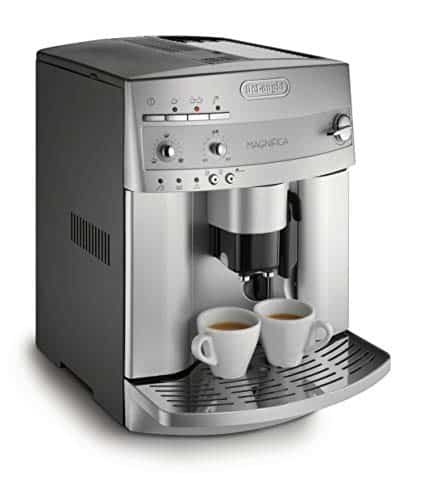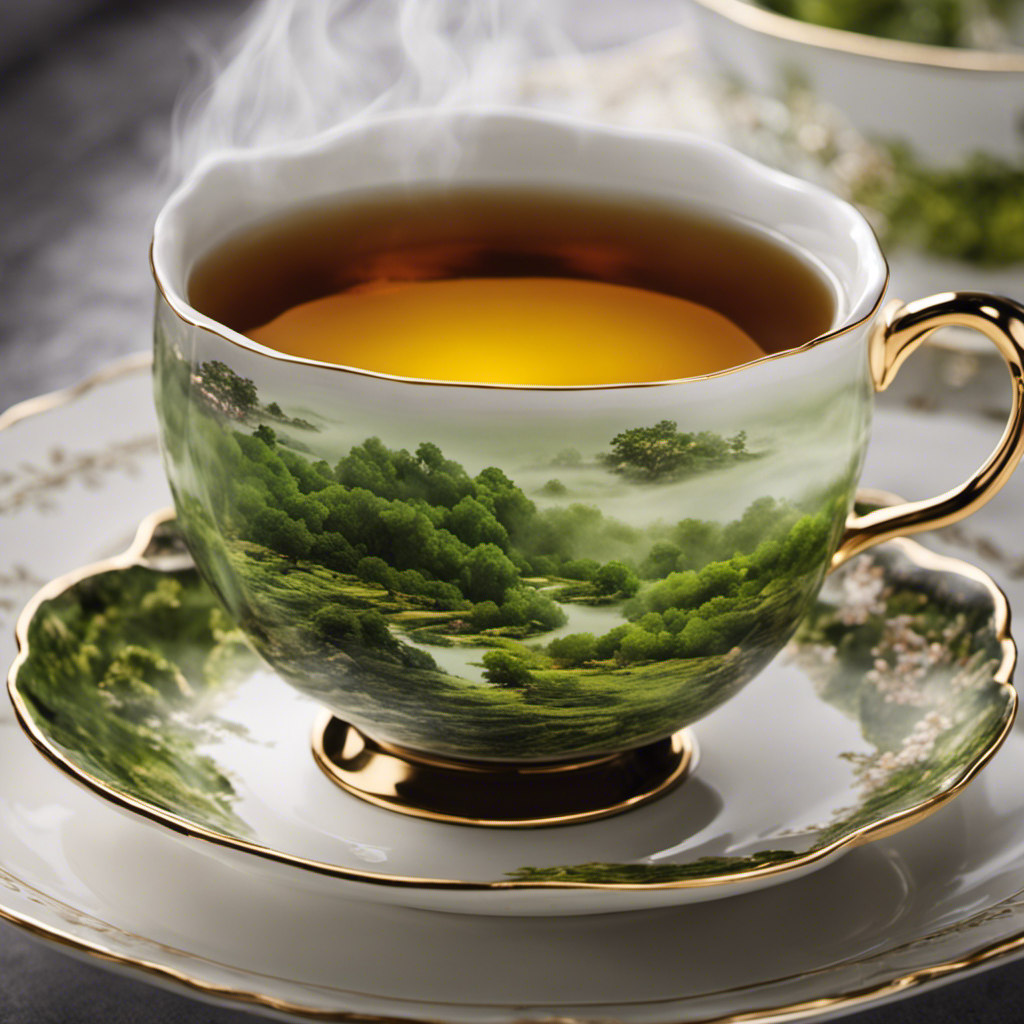Cappuccino
Master the Art of Authentic Italian Cappuccino: A Step-by-Step Guide to Perfecting the Brew

Did you know that over 6 billion cups of cappuccino are consumed worldwide each year?
If you’re like me, you can’t resist the rich aroma and velvety texture of a perfectly crafted Italian cappuccino.
In this step-by-step guide, I will share with you the secrets to mastering this art form.
From selecting the right espresso beans to frothing milk like a pro, I will take you on a journey to perfecting the brew and impressing your friends with your barista skills.
Let’s dive in and uncover the art of authentic Italian cappuccino.
Key Takeaways
- Cappuccino originated in Italy in the 17th century and is named after the Capuchin friars.
- Precision in the coffee-to-milk ratio and balancing flavors is crucial for a perfect cappuccino.
- Achieving a creamy texture requires the right balance between espresso and milk, along with proper frothing techniques and temperature control.
- Selecting the right espresso beans and mastering extraction techniques are critical for a flavorful cappuccino.
The Origins of Cappuccino: Unveiling the Italian Heritage
I love learning about the origins of cappuccino and uncovering its rich Italian heritage. Italian coffee culture is deeply rooted in tradition and passion, and understanding the secrets of the baristas is key to mastering the art of this beloved beverage.
Cappuccino, with its frothy milk and bold espresso, is a symbol of Italian coffee excellence. It originated in Italy in the 17th century and was named after the Capuchin friars due to the similarity between the color of their robes and the coffee drink.
The perfect cappuccino requires the perfect coffee-to-milk ratio, which is a delicate balance that only skilled baristas can achieve. By understanding this ratio, we can create a harmonious blend of rich espresso and creamy milk, resulting in the perfect cup of cappuccino.
Understanding the Perfect Coffee-to-Milk Ratio
When it comes to the perfect coffee-to-milk ratio, precision is key. As a coffee enthusiast, I’ve learned that finding the right balance between the two ingredients is essential for creating a harmonious flavor profile.
Not only does it affect the taste, but it also plays a crucial role in achieving that velvety, creamy texture we all love in a cappuccino.
Balancing Flavors Harmoniously
To truly appreciate the rich and velvety texture of a perfectly balanced cappuccino, it’s essential to skillfully blend the flavors of coffee and milk harmoniously. Balancing sweetness and enhancing aroma are key elements in achieving this exquisite beverage.
The sweetness of the coffee beans should be carefully balanced with the creamy texture of steamed milk, creating a harmonious marriage of flavors on the palate. By selecting high-quality coffee beans with distinct flavor profiles and brewing techniques that bring out the best in each bean, we can enhance the aromatic experience of the cappuccino. The intoxicating aroma of freshly brewed coffee should envelop the senses, preparing them for the creamy texture that awaits.
Achieving a creamy texture is the next step in the journey to the perfect cappuccino, which we’ll explore in detail in the following section. So, let’s delve into the art of creating a captivatingly creamy cappuccino.
Achieving Creamy Texture
In order to achieve a perfectly creamy texture, I carefully measure out the ideal coffee-to-milk ratio for my cappuccinos. The key to achieving silky smoothness lies in finding the right balance between the boldness of the espresso and the richness of the milk.
Too much coffee and the texture becomes overpowering; too much milk and it loses its intensity. Once the coffee is brewed, I focus on creating velvety foam by steaming the milk to just the right temperature and frothing it to the perfect consistency.
The magic happens when the milk blends seamlessly with the espresso, resulting in a luscious, creamy delight that dances on my taste buds. The importance of proper frothing can’t be overstated, as it’s the final touch that elevates a cappuccino from good to extraordinary.
Importance of Proper Frothing
Usually, I find that the importance of proper frothing lies in achieving the perfect coffee-to-milk ratio for an exceptional cappuccino. However, there’s another crucial element that often goes overlooked – temperature control.
When it comes to frothing milk, the temperature plays a significant role in determining the texture and flavor of the final product. The ideal temperature for frothing milk is between 140°F and 160°F, as this range allows for the proteins in the milk to properly denature, creating a creamy and velvety texture. Going above or below this range can result in a thin and watery froth or a burnt and bitter taste.
To achieve the perfect temperature, it’s essential to use a thermometer and adjust the heat accordingly. By mastering the art of temperature control alongside proper frothing techniques, you can elevate your cappuccino experience to new heights.
Selecting the Right Espresso Beans: A Critical Choice
Selecting the right espresso beans is a critical choice that can make or break your perfect cup of coffee. The type of beans you choose will have a significant impact on the flavors you experience in your espresso. Additionally, the roast level of the beans will affect the overall taste profile, from light and fruity to dark and bold.
Bean Type Impact Flavors
I absolutely love how different bean types can have such a profound impact on the flavors of my cappuccino. As a passionate coffee enthusiast, I understand the importance of selecting the right beans and how they can affect the overall taste of my favorite brew.
When it comes to crafting the perfect cup, both roasting techniques and brewing methods play a crucial role. The roasting process brings out the unique characteristics of each bean, enhancing its flavor and aroma. Different roast levels, such as light, medium, and dark, can create distinct taste profiles.
Lighter roasts tend to have brighter and fruitier flavors, while darker roasts offer a bolder and more robust taste. Understanding how roast level affects taste allows me to tailor my cappuccino experience to my preferences.
Roast Level Affects Taste
How does the roast level affect the taste of my cappuccino, and what is the best way to select the right espresso beans for a perfect brew? When it comes to crafting the perfect cup of cappuccino, the roast level of your espresso beans plays a crucial role in determining the flavor profile of your brew. Different roast levels bring out distinct characteristics in the beans, resulting in a wide variety of flavors. To help you understand the impact of roast level on taste, here is a table showcasing the different roast levels and their corresponding flavor profiles:
| Roast Level | Flavor Profile |
|---|---|
| Light | Bright, acidic |
| Medium | Balanced |
| Dark | Bold, smoky |
| Espresso | Rich, robust |
Mastering the Art of Espresso Extraction
During my journey of mastering the art of espresso extraction, I’ve learned that timing is crucial for achieving a balanced and flavorful shot.
Espresso extraction techniques play a significant role in the process of mastering coffee brewing. It’s not just about the grind size, dose, and tamp pressure; it’s also about the precise timing of the extraction.
The perfect shot requires finding the sweet spot where the flavors are extracted optimally, without any bitter or sour notes. This requires careful monitoring of the extraction time, ensuring that the water passes through the coffee grounds at the right speed.
Too fast, and the shot will be weak and lacking in body. Too slow, and it will be overpowering and bitter.
Mastering the timing of extraction is the key to unlocking the full potential of the coffee beans and creating a truly exceptional espresso.
Frothing Milk Like a Pro: Techniques and Tips
One of the most important techniques for frothing milk like a pro is achieving the perfect temperature for steaming, which can greatly enhance the texture and taste of your cappuccino.
When it comes to frothing milk, there are various alternatives to consider, such as soy, almond, or oat milk, which can provide different flavors and textures to suit your preferences.
However, regardless of the milk you choose, troubleshooting frothing techniques is essential to ensure consistent results. It’s crucial to start with cold milk, as it allows for better control and creates more stable foam.
Additionally, using a quality steam wand and properly positioning it in the milk can help achieve the desired frothiness.
The Art of Pouring: Achieving the Perfect Cappuccino Layering
I love the art of pouring because it allows me to achieve the perfect cappuccino layering. As a barista, I take pride in my ability to create a smooth texture and beautiful design atop each cup. Pouring techniques play a crucial role in achieving this desired outcome.
It’s all about finding the right balance between speed and control, ensuring that the milk blends seamlessly with the espresso. The key is to start with a steady, controlled pour, allowing the milk to flow evenly and creating a solid foundation. Then, as the cup fills, I gently increase the pour’s speed, creating a beautiful layer of foam on top.
This technique not only enhances the visual appeal of the cappuccino but also ensures a harmonious combination of flavors. Mastering the art of pouring truly elevates the cappuccino experience to new heights.
Enhancing Flavors: Exploring Traditional Cappuccino Additions
As a barista, I love experimenting with traditional cappuccino additions to enhance the flavors and create a unique and delicious experience for my customers. There’s something truly special about the art of crafting a perfectly balanced cappuccino, and exploring different variations can take that experience to another level.
Here are three additions that I highly recommend trying:
-
Cinnamon: Sprinkling a dash of cinnamon on top of your cappuccino can add a warm and comforting flavor profile. It complements the rich espresso and creamy milk, creating a delightful harmony of tastes.
-
Vanilla: A splash of vanilla syrup or a few drops of vanilla extract can transform a regular cappuccino into a fragrant and indulgent treat. The sweet and creamy notes of vanilla pair perfectly with the robustness of the coffee.
-
Non-Dairy Alternatives: For those who prefer to avoid dairy, there are plenty of non-dairy milk options available, such as almond, oat, and soy. These alternatives can add a unique creaminess and subtle nutty flavors to your cappuccino, catering to different dietary preferences without compromising on taste.
Perfecting Latte Art: Impress With Your Cappuccino Presentation
Creating intricate and eye-catching designs with steamed milk is the key to impressing customers with my cappuccino presentation. As a barista, I’m constantly honing my latte art techniques to elevate the overall experience for my customers. From the classic heart and rosetta to more intricate designs like the swan and tulip, mastering latte art is a skill that sets apart a good cappuccino from a truly exceptional one.
To perfect my cappuccino presentation, I pay attention to every detail. It starts with the quality of the espresso shot, ensuring it’s perfectly extracted and balanced. The temperature of the milk is crucial too, as it affects the texture and consistency needed for creating latte art. I practice creating different patterns and designs, experimenting with pouring techniques and milk frothing methods to achieve the desired results.
In addition to the technical aspects, presentation tips play a significant role in impressing customers. I focus on the placement of the cup, ensuring it’s centered and at the right angle to showcase the design. I also pay attention to the cleanliness of the cup and saucer, as well as the overall presentation of the drink, including the garnishes or dustings on top.
Mastering latte art techniques and perfecting cappuccino presentation is a continuous journey. It requires passion, dedication, and a commitment to excellence. By constantly striving to improve my skills, I’m able to create not only a delicious cappuccino but also a visually stunning work of art that delights and impresses my customers.
Frequently Asked Questions
How Long Does It Take to Extract the Perfect Shot of Espresso?
For the perfect shot of espresso, factors like grind size, brewing temperature, and coffee freshness influence extraction time. Adjusting the grind size finer or coarser can optimize extraction time for a balanced and flavorful cup.
What Is the Ideal Temperature for Frothing Milk?
To achieve the ideal milk temperature for frothing, it is crucial to understand the importance of precision. By mastering frothing techniques, I can create a creamy and delicious cappuccino that will transport you to the streets of Italy.
Can I Use Any Type of Milk for Frothing?
Can any milk be used for frothing? Different types of milk affect the taste and texture of the cappuccino. Whole milk creates a creamy texture, while almond milk adds a nutty flavor. Experimenting with different milks can elevate your cappuccino experience.
What Is the Difference Between a Cappuccino and a Latte?
The difference between a cappuccino and a latte lies in the ratio of espresso, steamed milk, and foam. A cappuccino has equal parts of each, while a latte has more steamed milk and a thin layer of foam on top.
Are There Any Alternative Methods for Brewing Cappuccino at Home Without an Espresso Machine?
Sure, there are alternative methods for brewing cappuccino at home without an espresso machine. One option is to use a French press or a stovetop espresso maker. As for frothing milk, you can try using a handheld milk frother or a whisk.
Conclusion
Mastering the art of authentic Italian cappuccino is like conducting a symphony with each element playing its part in perfect harmony.
From understanding the coffee-to-milk ratio to selecting the right beans, every detail is crucial.
With the right techniques and passion, you can create a masterpiece that delights both the palate and the eye. Just like a skilled artist, let your creativity flow and impress with your cappuccino presentation.
Unleash your inner barista and immerse yourself in the world of Italian coffee culture.
Justin is a seasoned author, coffee and tea enthusiast, and an essential member of the Cappuccino Oracle team. With a keen appreciation for the complexities of coffee, coffee alternatives, and tea, Justin has dedicated his professional career to exploring these realms and sharing his insights with readers worldwide.
Justin’s immersion in the world of coffee, coffee alternatives, and tea began at a young age, kindling a passion that extended beyond mere consumption. This love for these beverages led him to combine his talent for writing with his devotion to coffee and tea, bringing him to Cappuccino Oracle as a dedicated author.
Cappuccino
The Cultural History Of Cappuccino: A Perfect Morning Cup

Beginning my day with a cappuccino is something I truly enjoy. Its luxurious fragrance, creamy feel, and the ideal mix of espresso, steamed milk, and foam create the perfect morning treat.
But have you ever wondered about the cultural history behind this beloved beverage? Well, let me take you on a journey through time as we explore the origins, evolution, and popularity of cappuccino.
Dating back more than 400 years, cappuccino has its roots in Austria and Italy, where it was named after the Capuchin friars. Over the years, it has transformed from a simple coffee drink to a work of art, thanks to the invention of the espresso machine.
Today, cappuccino is enjoyed not only in the morning, but throughout the day, in various settings, from local cafes to high-end coffee shops.
So, grab your favorite mug, sit back, and join me as we delve into the cultural history of cappuccino – the perfect morning cup.
Key Takeaways
- Cappuccino originated in Austria and Italy and is named after the Capuchin friars.
- The modern version of cappuccino evolved after the invention of the espresso machine.
- Cappuccino is traditionally a morning drink but is now enjoyed throughout the day.
- Cappuccino can be customized with flavorings and can be enjoyed in various settings.
Origin and Evolution
I know that cappuccino originated in Austria as kapuziner and in Italy as cappuccino, named after the Capuchin friars, and evolved into its modern form after the invention of the espresso machine. The influence of these two countries can still be seen in the way cappuccino is enjoyed today.
In Austria, the kapuziner was made with equal parts coffee and milk, while in Italy, cappuccino was made with equal parts espresso, steamed milk, and milk foam. This traditional recipe is still followed in many places, but there are also modern variations that have emerged.
Some variations include using hot milk instead of steamed milk, adding flavorings such as vanilla or caramel, or even using cream instead of milk. These variations have made cappuccino a versatile and customizable drink that can be enjoyed by coffee lovers all over the world.
Ingredients and Preparation
Crafting a cappuccino involves combining carefully measured amounts of espresso, steamed milk, and velvety milk foam. The choice of milk for a cappuccino is crucial in achieving the perfect balance of flavors and textures. Whole milk is commonly used for its creamy richness, but some prefer to use lower fat options like skim or soy milk. Each type of milk imparts a slightly different taste and texture to the cappuccino.
When it comes to flavorings, some people enjoy adding flavored syrups to their cappuccino for a touch of sweetness or a unique twist. However, there are pros and cons to using flavored syrups. On one hand, they can enhance the taste and create a more personalized experience. On the other hand, they can overpower the natural flavors of the espresso and milk. Ultimately, the decision to use flavored syrups in a cappuccino is a matter of personal preference.
Popularity and Enjoyment
To truly appreciate the popularity and enjoyment of this beloved beverage, one must delve into its cultural significance and historical roots. Cappuccino has not only gained popularity as a morning drink but has also become a symbol of the coffee culture worldwide. It has been embraced and adapted by different countries, resulting in unique variations that reflect their own cultural preferences.
Here are some examples:
1) Italy: Cappuccino is deeply ingrained in Italian culture and is commonly enjoyed with breakfast. Italians take great pride in their coffee craftsmanship and often create stunning latte art on top of their cappuccinos.
2) United States: In America, the iced cappuccino has gained immense popularity, especially during the warmer months. It is a refreshing twist on the traditional hot version and is often enjoyed as an afternoon pick-me-up.
3) Greece: Here, the frappé cappuccino is a favorite among locals and tourists alike. It is made with instant coffee, sugar, water, milk, and ice, creating a frothy and delicious drink perfect for hot summer days.
4) Australia: Australians have their own version called the ‘flat white,’ which is made with a double shot of espresso and velvety microfoam. It has gained a cult following and is considered a staple in Australian coffee culture.
These global variations highlight the cultural significance and adaptability of cappuccino, making it a beloved beverage enjoyed by people from all walks of life.
Frequently Asked Questions
How did the name "cappuccino" come about?
The name ‘cappuccino’ originated from the Italian influence and was derived from the Capuchin friars. This interesting fact reveals the historical connection between the drink and the Capuchin order, adding depth to its cultural significance.
What are some common misconceptions about cappuccino?
Some common misconceptions about cappuccino include thinking that it is only a morning drink and that it is the same as a latte. Cappuccino can be enjoyed at any time of day and has a different ratio of ingredients than a latte.
Are there any health benefits associated with drinking cappuccino?
Drinking cappuccino in moderation may have potential health benefits. Some studies suggest cappuccino may promote heart health due to its antioxidant content. Additionally, the ritual of enjoying a cappuccino can contribute to mental well-being and relaxation.
How has the cultural significance of cappuccino evolved over time?
The cultural significance of cappuccino has evolved over time. It has become more than just a morning drink, now enjoyed throughout the day. Cappuccino has also become a popular icon in popular culture, often depicted in movies and TV shows.
Are there any regional variations of cappuccino?
Oh, the regional variations of cappuccino are truly a delightful journey for the taste buds! From the rich and creamy cappuccino freddo in Italy to the indulgent iced cappuccino in America, each culture adds its own twist to this beloved beverage. The cultural significance of these variations showcases the adaptability and creativity of coffee lovers worldwide.
Arf, an author and an innovative enthusiast of coffee, coffee alternatives, and tea, plays a crucial role as a contributor to the esteemed Cappuccino Oracle platform. Renowned for his curiosity and passion for these captivating beverages, Arf has carved out a unique space for himself in the world of exploration and writing. He realized that coffee, coffee alternatives, and tea are not mere drinks to keep one awake, but universes of flavors and stories waiting to be explored.
Arf’s articles for Cappuccino Oracle blend meticulous research with personal experiences, providing readers with an in-depth understanding of various types of coffee, coffee alternatives, and tea, along with their unique characteristics, cultures, and histories. His honest reviews and engaging narratives guide readers on their own journeys, helping them discover their preferences and find their perfect brew.
Cappuccino
The Adventures of Espresso, Milk, and Foam: A Tale of Cappuccino Creation

In a parallel universe not too far from our own, the magical land of Coffeelandia is home to an array of coffee ingredients with unique personalities and desires. This is a tale of adventure and unity, where the heroes – Espresso, Milk, and Foam – come together to create the perfect cappuccino.
Chapter 1: The Bold Espresso
Espresso, a bold and intense character, resided in the heart of Coffeelandia. He was known for his daring spirit and ability to energize those around him. One day, Espresso was invited to the annual Coffeelandia Gala, where the finest coffee ingredients gathered to form the most exquisite beverages. Intrigued by the challenge, Espresso embarked on a journey to find the perfect companions to create a legendary cappuccino.

Chapter 2: The Creamy Milk
Espresso’s quest led him to Dairyland’s lush, green pastures, where he met the charming and gentle Milk. With her velvety texture and subtle sweetness, Milk was the ideal partner to balance Espresso’s intensity. Milk agreed to join Espresso on his adventure, excited to showcase her talents at the Coffeelandia Gala. Together, they set off to find the final member of their cappuccino trio.
Chapter 3: The Fluffy Foam
Upon reaching the Cloudy Peaks, Espresso and Milk encountered Foam, an airy and playful character known for his ability to bring lightness and joy to everyone he met. As they spoke with Foam, they realized that his airy nature would perfectly contrast their rich and creamy blend. Filled by the opportunity to be part of a legendary cappuccino, Foam eagerly agreed to join Espresso and Milk on their journey.
Chapter 4: The Cappuccino Trio Unites
With the trio united, Espresso, Milk, and Foam ventured back to Coffeelandia, where they practiced their harmonious collaboration. Espresso discovered that by combining his intensity with Milk’s smoothness and Foam’s lightness, they formed an extraordinary symphony of flavors and textures. They perfected their roles, with Espresso as the strong foundation, Milk as the velvety layer, and Foam as the delicate, cloud-like finish.

Chapter 5: The Coffeelandia Gala
The long-awaited night of the Coffeelandia Gala arrived, and the cappuccino trio took center stage. As they came together, their individual strengths fused into a dazzling spectacle, creating a cappuccino that enchanted the audience. The rich aroma, velvety texture, and harmonious taste mesmerized the crowd, earning them the coveted title of “The Perfect Cappuccino.”

Conclusion
The adventures of Espresso, Milk, and Foam remind us that despite our differences, unity and collaboration can lead to extraordinary creations. Their story is a testament to the power of friendship, and their legendary cappuccino will forever be remembered as a symbol of harmony in the magical land of Coffeelandia.
Noah, the Editor-in-Chief at Cappuccino Oracle, plays a pivotal role in shaping the voice and vision of our renowned platform. With an unwavering passion for coffee, coffee alternatives, and tea, Noah leads Cappuccino Oracle towards new horizons in the realm of coffee journalism.
Beyond his professional responsibilities, Noah serves as a mentor and guiding force for his team. His dedication to journalistic excellence and genuine love for coffee, coffee alternatives, and tea continue to inspire and motivate the Cappuccino Oracle family. In the ever-evolving world of these beverages, Noah’s leadership ensures that our platform remains at the forefront, delivering enlightening and enjoyable content to our readers worldwide.
Cappuccino
Choose Your Perfect Cappuccino Maker: The Ultimate Guide!

I don’t know about you, but for me, a perfect morning starts with a delicious and creamy cappuccino. But getting that café-quality drink at home can be a challenge, especially if you don’t have the right equipment. That’s where this ultimate guide comes in.
I’ve done the research, tested the machines, and now I’m ready to share with you the best cappuccino makers on the market. When it comes to choosing a cappuccino maker, there are a few things to consider.
First, there’s your budget. Cappuccino makers can range from a couple of hundred dollars to thousands of dollars, so it’s important to know what you’re willing to spend.
Next, there’s the level of automation you’re looking for. Do you want a machine that does everything for you, or are you willing to put in a little more effort for a better cup of coffee?
Finally, there’s the durability and brewing precision of the machine. You want something that’s going to last and consistently produce a great cup of cappuccino.
In this guide, we’ll explore all of these factors and more to help you choose the perfect cappuccino maker for your home.
Key Takeaways
- Choosing a cappuccino maker depends on factors such as budget, automation level, durability, and brewing precision.
- Semi-automatic machines offer the most control, while super-automatic machines offer the most convenience and customization.
- Good grinders are essential for semi-automatic machines, and pre-ground coffee is not recommended.
- Capsule-based machines are convenient but can be costly, and cheaper machines may not produce authentic cappuccino.
Machine Selection Criteria
I need to consider the machine selection criteria when choosing the best cappuccino maker for my home, based on my budget, desired level of automation, brewing precision, and durability. Durability ranking is an essential consideration since I want a machine that can last for years and withstand frequent use. I want to invest in a cappuccino maker that can handle my daily coffee needs without breaking down easily. Therefore, I’ll prioritize brands that have a proven track record of making durable machines, such as DeLonghi and Breville.
Another crucial factor to consider is the importance of grinding quality. Even the best cappuccino maker will not produce great coffee without good grounds. Therefore, I need to invest in a decent grinder that can produce consistent grounds for my espresso shots. A good grinder will also help me achieve the desired brewing precision, which is crucial for making a perfect cappuccino.
I’ll opt for a semi-automatic machine that gives me more control over the brewing process and allows me to adjust the grind size to my liking.
Types of Cappuccino Machines
Who needs a personal barista when you can have a clunky, confusing, and overpriced cappuccino machine cluttering your countertop? With so many options on the market, it can be overwhelming to decide which type of cappuccino maker is right for you. The first decision to make is whether you want a manual or automatic machine. Manual machines require more skill and time, but allow for more control over the brewing process. Automatic machines are more convenient, but may not offer as much customization.
The second decision to make is whether you want a capsule or ground coffee machine. Capsule machines are more convenient, but can be costly over time, as you need to constantly buy new capsules. Ground coffee machines require more effort, but allow for more flexibility in terms of the type of coffee you use. To help visualize these options, see the table below:
| Type of Machine | Pros | Cons |
|---|---|---|
| Manual | More control over brewing process | Requires more time and skill |
| Automatic | More convenient | May not offer as much customization |
| Capsule | More convenient | Can be costly over time |
| Ground | More flexibility in type of coffee used | Requires more effort |
Carefully considering these options will help you choose the perfect cappuccino maker for your needs. Whether you prefer the convenience of a capsule machine or the control of a manual machine, there is a cappuccino maker out there that will make your mornings a little bit brighter.
Top Reviewed Cappuccino Machines
After researching and analyzing various options, it’s clear that the DeLonghi ESAM3300 fully automatic machine is a top contender for the best home cappuccino maker. Here’s why:
- This machine has a built-in grinder, ensuring you use freshly ground beans every time.
- It has a separate milk frother, allowing you to customize the texture and temperature of your milk.
- With its user-friendly interface, you can easily adjust the strength of your espresso and the amount of milk froth you want.
While it may be more expensive than other budget options, it offers great value for money in the long run due to its durability and reliability. The ESAM3300 has a sleek design that looks great in any kitchen, making it a stylish addition to your home.
If you’re looking for a cappuccino maker that offers a high level of customization, you may want to consider a semi-automatic machine. These machines require more time and skill to use, but they offer greater control over the brewing process.
However, for those who prefer convenience and ease of use, a super-automatic machine like the DeLonghi ESAM3300 is the way to go. It offers a perfect balance of customization and automation, making it an excellent choice for any cappuccino lover.
Frequently Asked Questions
What are some common mistakes to avoid when using a cappuccino maker?
Making a cappuccino is like baking a cake; proper frothing techniques are as important as choosing the right milk. Avoid common mistakes by using a good frother and whole milk for a creamy and delicious cappuccino.
Can cappuccino makers be used to make other types of coffee drinks?
Yes, cappuccino makers can be used to make other coffee drinks such as lattes, macchiatos, and Americanos. However, compatibility with different types of coffee beans may vary, so it’s important to check the manufacturer’s recommendations. Alternative uses can expand your coffee-making options.
How do you properly maintain and clean a cappuccino maker?
I know cleaning and maintaining a cappuccino maker may seem daunting, but it’s crucial for longevity and great-tasting coffee. Use a descaling solution every month, clean the steam wand after each use, and regularly remove and clean the brew group.
Are there any health concerns to consider when using a cappuccino maker?
When using a cappuccino maker, it’s important to consider coffee consumption guidelines and the potential risks of milk frothing. As someone knowledgeable and passionate about coffee, I prioritize safety and recommend researching best practices for using your specific machine.
Can cappuccino makers be used for commercial purposes or are they strictly for home use?
Cappuccino makers can be used for commercial purposes, but capacity limitations should be considered. It’s important to select a machine that can handle the demand and produce consistent, high-quality cappuccinos.
Conclusion
Well, there you have it, folks – the ultimate guide to choosing the perfect cappuccino maker for your home! We’ve covered everything from budget-friendly options to high-end machines, and even provided tips on how to make the perfect cappuccino at home.
Now, I know choosing the right cappuccino maker can be overwhelming, but don’t let that discourage you. With a little research and some trial and error, you’ll be well on your way to making café-quality drinks in no time.
Remember, the key to finding your perfect cappuccino maker is to consider criteria such as automation level, durability, and brewing precision. And don’t forget to take into account your personal taste preferences and budget.
So go ahead, choose your machine, and start enjoying the perfect cappuccino at home.
And as they say, “Life’s too short for bad coffee.”So why not make it great? Cheers to delicious caffeine-filled mornings!
Arf, an author and an innovative enthusiast of coffee, coffee alternatives, and tea, plays a crucial role as a contributor to the esteemed Cappuccino Oracle platform. Renowned for his curiosity and passion for these captivating beverages, Arf has carved out a unique space for himself in the world of exploration and writing. He realized that coffee, coffee alternatives, and tea are not mere drinks to keep one awake, but universes of flavors and stories waiting to be explored.
Arf’s articles for Cappuccino Oracle blend meticulous research with personal experiences, providing readers with an in-depth understanding of various types of coffee, coffee alternatives, and tea, along with their unique characteristics, cultures, and histories. His honest reviews and engaging narratives guide readers on their own journeys, helping them discover their preferences and find their perfect brew.
-

 Cappuccino Oracle Selected Reviews2 weeks ago
Cappuccino Oracle Selected Reviews2 weeks agoPuroAir HEPA 14 Air Purifier Review
-
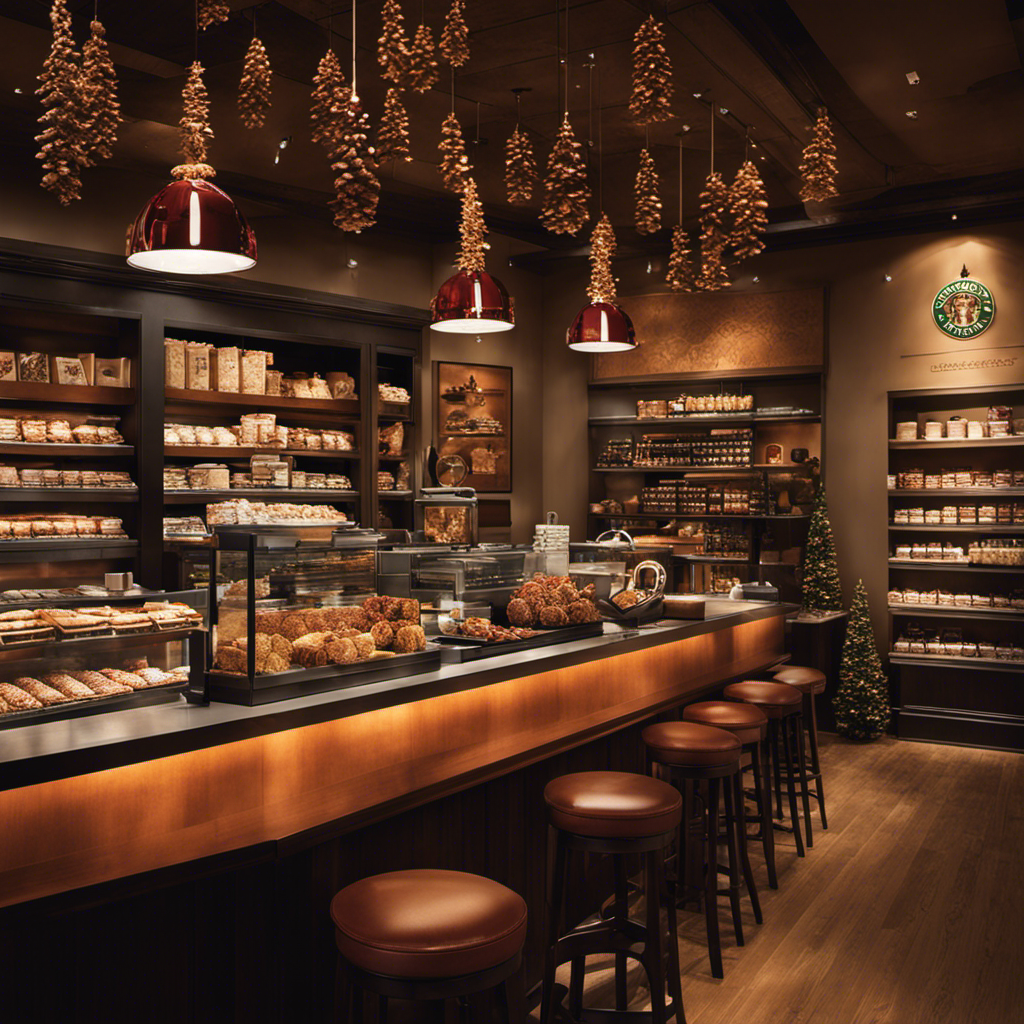
 Coffee Basics8 hours ago
Coffee Basics8 hours agoHow Do Starbucks’ Seasonal Specialties Appeal to Customers?
-

 Cappuccino Oracle Selected Reviews3 weeks ago
Cappuccino Oracle Selected Reviews3 weeks agoNineSky Dehumidifier Review: A Game-Changer for Comfort
-
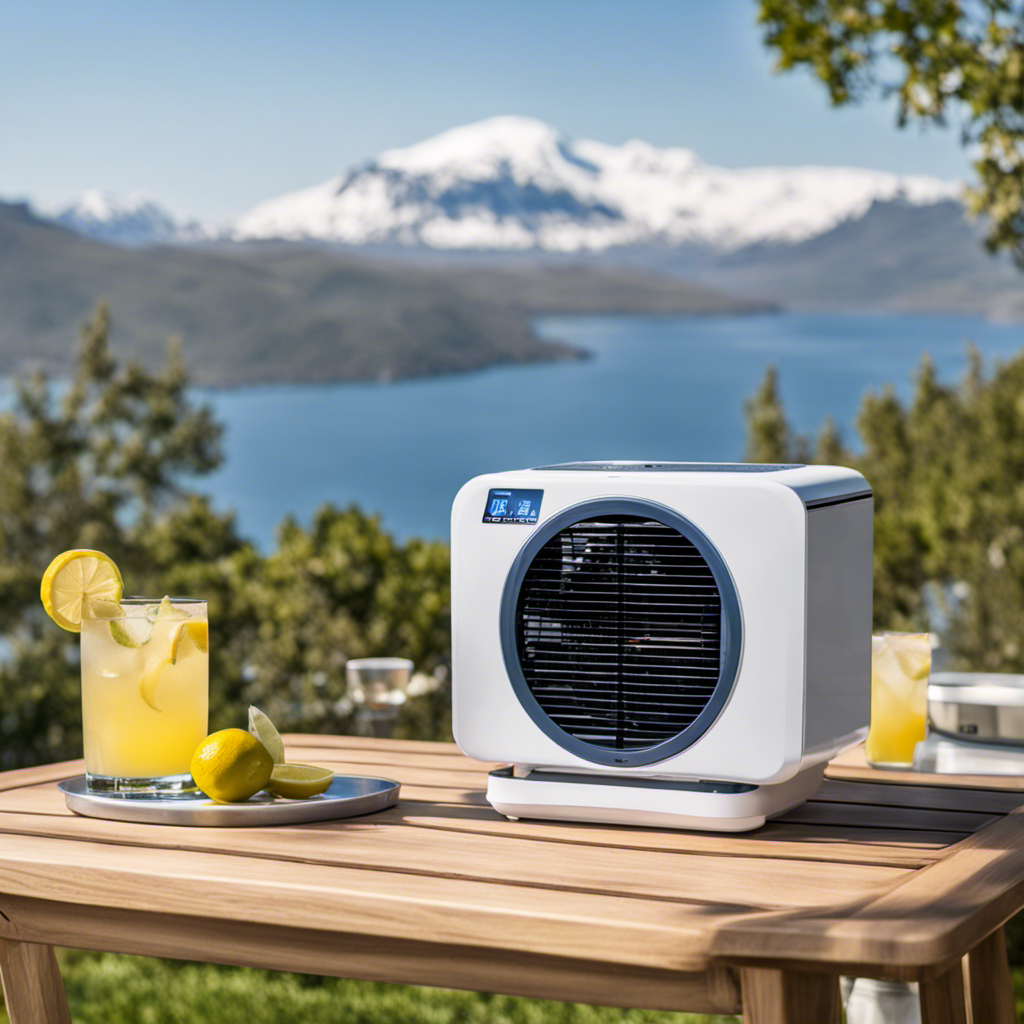
 Cappuccino Oracle Selected Reviews3 weeks ago
Cappuccino Oracle Selected Reviews3 weeks agoArctic Air Pure Chill 2.0 Review: Cool and Portable
-

 Cappuccino Oracle Selected Reviews4 weeks ago
Cappuccino Oracle Selected Reviews4 weeks agoGRINCHAT Mini Washer Review
-
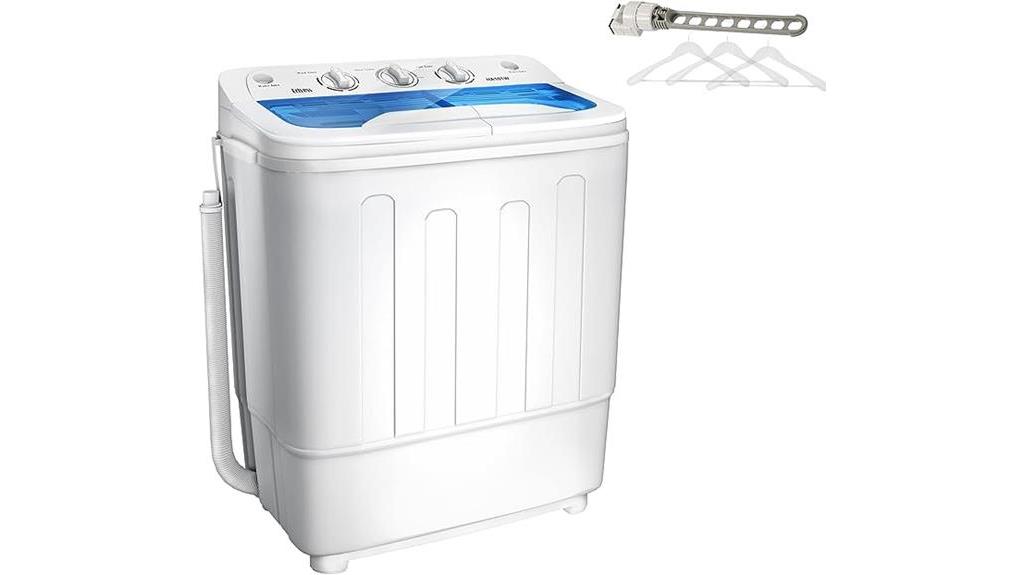
 Cappuccino Oracle Selected Reviews4 weeks ago
Cappuccino Oracle Selected Reviews4 weeks agoErivess Portable Twin Tub 18lbs Washing Machine Review
-

 Cappuccino Oracle Selected Reviews2 weeks ago
Cappuccino Oracle Selected Reviews2 weeks agoToLife Dehumidifier Review: Efficient and Portable Solution
-

 Cappuccino Oracle Selected Reviews3 weeks ago
Cappuccino Oracle Selected Reviews3 weeks agoBlueair 511 Air Purifier Review: Improved Air Quality




